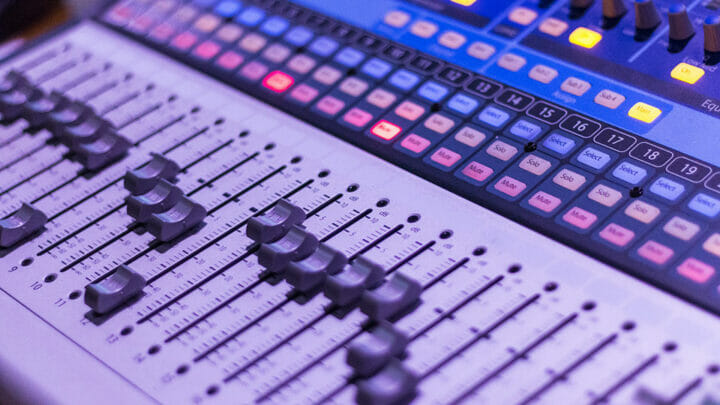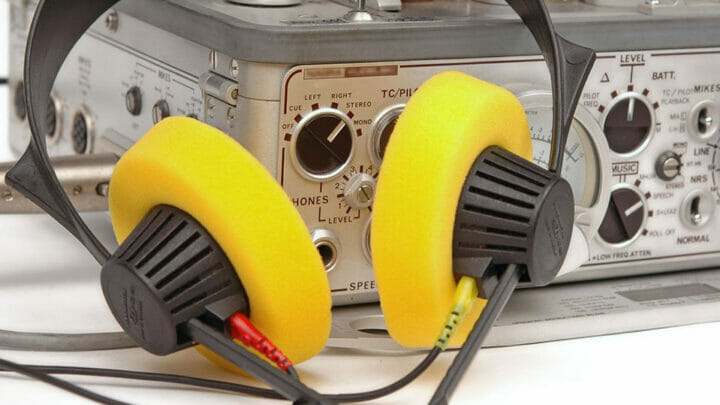Have you ever taken your wired earbuds for a walk to discover that there is an annoying thumping noise inside your ears? No matter how good your earbuds sound, this noise always ruins the listening experience.

That frustrating thump is called cable noise. In this article you’ll find out:
- What exactly is “cable noise” and why it gets generated in the first place.
- What you can do to prevent it.
- What you need to check when you’re buying the next pair of in-ear headphones.
The audio community also refers to this as the”microphonics.” But the latter can be many different things, all of which do not include the phenomenon of cable noise in earbuds. Therefore, to be more scientifically correct, we should avoid using the word “microphonics” in this context.
Users Complaining About the Cable Noise


Why Does Touching the Headphone Cable Create Noise?
To be more specific, the cable noise happens when the vibrations from the cable rubbing against a surface travel up to your ears. And because in-ear monitors need to be inserted deep into your ear canal, these vibrations are much more noticeable.
Why Do Some Cables Have Worse Cable Noise Than Others?
It all comes down to the build materials used for the cable. It’s not necessarily that a more expensive cable will have less cable noise or vice versa. When picking your next pair of wired earbuds, try to avoid these cable characteristics:
- Feels cheap to the touch
- Feels sticky
- It’s very thin
- It’s very stiff
- It’s braided in fabric
These 5 styles of cables usually produce more noise. Mainly because they’re very rigid, and secondly, because they’re so thin, they can quickly start to vibrate.
Therefore, the cable styles that you need to look for are:
- It’s insulated with rubber
- No memory wire (cable doesn’t retain its original packaged shape and can easily be straightened)
- It’s slightly thicker, but still easily bendable
The thicker the cable, the better the dampening effect is going to be. Of course, the wire shouldn’t be too thick to add unnecessary weight. You don’t want your in-ear headphones to be less comfortable for the sake of reducing cable noise (see comfy earbuds here).

How To Prevent Cable Noise?
You probably already enjoy the sound of your earbuds very much, but cable noise drives you crazy. Thankfully there is no need for you to buy a new pair of earbuds just because of that.
Reality is that even with the best cable possible, noise can still be somewhat present. That is why it’s a better idea to prevent the cable noise on your existing earbuds.
There are a few ways to eliminate the annoying cable noise:
Method 1: Use the shirt clip
You usually get this kind of clip packed with your earbuds, and for a good reason. When you clip the wire to your shirt, it dampens the vibration from the wire. The higher on your shirt you put the clip, the lesser the chance of getting severe cable noise.
Method 2: Wire the cable behind your ears
This method is by far the most effective. The top of your ear stops the cable’s vibration from going further into your ears. Moreover, wearing your earbuds this way also ensures better stability and weight distribution.

Although the method 2 promises the best results, it involves a little bit of practice to get used to. Also, some users might not find this wearing style very comfortable. Some in-ear headphones are also designed so that you can’t use them with a wire behind the ear.
However, some brands are making earbuds designed to wear them with the wire behind your ear, like Shure.
Cable Noise in Wireless Earbuds
Annoying noise can still be present in wireless earbuds, specifically those that are still connected with a wire. The wire is usually behind your neck, where it’s constantly bouncing or rubbing against your clothes.
The latter is fixable by shortening the wire with a clip, tightening it closer to your skin, which prevents it from dangling freely on your neck.
Thankfully, the best workout headphones today don’t have any cables anymore.
But even truly wireless earbuds are not entirely safe from the thumping noise created by movement. They can still bounce in your inner ear, creating unwanted noise. Thankfully the effect isn’t as severe as in wired earbuds and it’s mostly present while running.
What is the Difference Between Cable Noise and Microphonics?
These two terms are quite similar, although the word “microphonics” is used to describes a phenomenon where a mechanical vibration finds it’s way into the wire’s electric circuit, causing an electrical noise.
It was a common problem when a lot of audio equipment had built-in vacuum tubes. When charged, elements in tubes produce a lot of mechanical vibrations, which are audible as microphonics when plugging a pair of headphones or speakers. The problem was later resolved with isolating the tubes, making the mount shockproof with rubber grommets, and so on.
Nowadays, microphonics commonly happens with the use of cables. The quality of the cable is usually to blame since the unwanted electronic noise happens because of poor shielding or grounding. Sometimes even the room can be a cause of microphonics, especially if there is other electronic equipment laying around, electronically interfering with each other.
A few reasons for microphonics:
- Electrostatic hum – a 50/60Hz hum picked by a nearby electronic device or wires because of poor cable shielding
- Handling noise – noise created by lifting, bending, or crushing the cable.
- Radiofrequency interference (RFI) – cable turns into an antenna, picking the nearby electromagnetic noise from other electronic devices, sometimes you can even hear actual radio stations.
- Electromagnetic induction (EMI) – happens when your equipment is placed near a device that produces a strong magnetic field, like power lines or power transformers.
- Static – electric buildup when cables are rubbing against each other or dragged against the carpet.
- Ground loop – a buzzing noise coming from a speaker/headphone, caused by 2 devices being plugged into different wall sockets.
- Crosstalk – an interference when the electromagnetic field of one cable interact with another, corrupting the signal
The best way to reduce microphonics is to use a better, shielded cable:
- Foil shield: very light, cheap, and well enough for home use
- Braid shield: rigid, able to reduce RFI and EMI
- Foil and braid: high-quality protection against microphonics

From a childhood fascination with sound, Peter’s passion has evolved into a relentless pursuit of the finest headphones. He’s an audio expert with over 5 years of experience in testing both audiophile and consumer-grade headphones. Quote: “After many years, I can confidently tell which headphones are good and which are terrible.” Find his honest opinion in his reviews.



